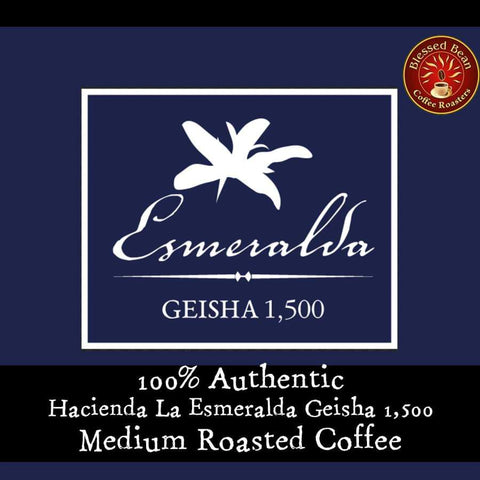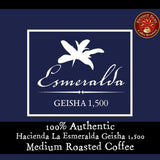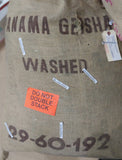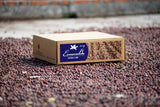Region: Central America
Roast: Light Artisan small batch roasted, and shipped the day you order.
Produced by the Peterson Family, third generation coffee growers and owners of Hacienda La Esmeralda, located in the Chiriquí province of the Boquete region in Panama. This coffee is a prized Geisha Arabica coffee. Geisha from Hacienda La Esmeralda has rated first by many well regarded critics and associations, making it the world's most famous geisha coffee. It has even won the Panama Cup of Excellence!
As a result, it's also one of the most in demand and expensive coffees in the world. Authentic Hacienda La Esmerelda sells for upwards of $50-65+ per 8 ounces. Usually what makes it cost more is fancier packaging.
We use our regular packaging, because we figure it's the amazing coffee you want, not a silver box that really just costs more. So we give you a whopping 12 oz for the incredible price of $48.95.
We also offer a 2 oz and 4 oz pouch. Even if you don't want to have a whole bag, you may want to just try this coffee once, or give a very special gift to the coffee lover on your list. With us, you can do that. Decide for yourself if this is the best coffee in the world!
GROWING REGION
Grown at an average altitude of 1500 meters above sea level, Geisha 1500 presents light floral attributes with medium acidity, sweet cup and light body. Coffees in this collection come from lots from Hacienda Esmeralda's three Geisha producing farms: Cañas Verdes, Jaramillo, El Velo. Every lot is subject to the same strict ordering as our other coffees to ensure the highest quality.
Hacienda La Esmeralda cares for its workers, offering educational support and medical care, paying higher wages and bonuses for the extra attention that goes into producing the exceptional Geisha varietal.
THE PROCESS
During washed process, coffee harvested is taken to a receiving tank where water is pumped in order to push it down a funnel. “Floaters” – unripe cherries that float on the surface – are discarded.
After passing through the receiving tank and having floaters removed, the remaining cherries have their surrounding cherry skin and pulp mechanically separated by a machine. The skin and pulp is collected to be used as fertilizer for the farms and pastures. The coffee is now comprised of the bean, surrounded by a layer of parchment (or pergamino), and covered in a sticky mucilage. Coffees then go to a mechanical demucilager to have their mucilage scrubbed off.
Drying is accomplished with a combination of traditional patio drying and electric Guardiola driers. Which technique gets used depends on the specific coffee being dried, how much space is available on patios and in driers, and what the weather is like during drying. Patio drying is the preferred method for microlots due to the fact that small sizes of coffee lots can’t go into the Guardiola. During patio drying, coffee is laid on the patio to be dried by the reflection of the sun. These coffees are spread in thin layers and rotated regularly to ensure an even drying. After being laid out on the patio, the beans will dry for anywhere from 3 to 7 days depending on the sunlight and weather conditions. Starting at 7AM, the beans are turned over by workers to ensure even drying. The goal is 11% humidity, which the mill manager is able to target with a moisture meter
| FARM NAME | Hacienda La Esmeralda |
|---|---|
| PRODUCER TYPE | Single Estate |
| PROCESSING | Washed |
| BAG TYPE | Grain Pro / Ecotact |
| PLANT SPECIES | Arabica |
| COFFEE GRADE | SHB EP |
| GROWING ALTITUDE | 1500m |



